💬 12 Rare Emojis That Are Too Underrated ✅


Rare emojis are the ones people forget the most on the Internet. The reasons aren’t clear, and while some have significant reasons, others didn’t stand out from the rest. Still, this doesn’t mean we can’t sit back and use them once in a while. You might even feel some sympathy for these emojis. Especially since some people have even made Twitter accounts for the most unused emojis to promote them.
A good reason why rare emojis exist is because of the different platforms. You cannot find a YouTube emoji in the Facebook or Twitter emoji list. A whole other type of rare emojis belongs in the Discord emojis, which is only used within the game platform. Another reason could be that people don’t understand what the emoji itself conveys, and this is an effect of cultural differences. Meanwhile, some emojis are also new to the platform, making it difficult for longtime emoji users to even notice.
Image from Adobe Stock
We went ahead and looked up a few rare emojis around the Internet. Now you can have an idea of what they are used for, their meaning, and possible reasons why they’re rare.
The Rare Emojis
What makes an emoji rare? Since thousands of emojis are available on the Internet, it’s easy to forget that other emojis exist. Many people stick to a few that they do know, such as the heart and smiley emojis. Sometimes, certain emojis also rise in popularity when celebrities begin using the emoji on their platforms.
We know how difficult it is to find rare emojis on your keyboard. Especially since you don’t know which ones are rarely used if you don’t search for them on the Internet. That is why we came up with the rare emojis list for you to get started on learning more about them.
Pregnant Man Emoji

Every year designers and developers present all-new emojis. 2021 pulled a new one that sparked the interest of curious Internet users. The 🫃 Pregnant Man emoji is one of the many weird emojis you can find on your software. It depicts a man, seemingly pregnant, holding his stomach protectively. The pregnant man emoji is a variant of the 🫄 Pregnant Person emoji and the 🤰 Pregnant Woman emoji. Developers created the emoji as part of their gender-inclusive emojis.
But is it possible for a man to actually become pregnant? Surprisingly, it is possible for men to get pregnant! Transmasculine people, also known as AFAB, are people who were born females but identify as men. While they remain men by identification, the transmasculine gender still possesses reproductive organs necessary to carry a child. On the other hand, there are also ongoing technological researches for transfeminine genders to carry children as well.
Internet users generally use the pregnant man emoji to describe two things: overeating and actual pregnancy. The first one is overeating, which is comically used by many people to describe being full. This is because of the term “food baby” which refers to having eaten so much food that your belly becomes bloated as if you are pregnant. The pregnant man emoji next to another food emoji type can describe what type of food caused your bloated belly. The other use of the pregnant man emoji is to describe, well, an actual pregnant male. To further explain the pregnancy, you could also add the 🍼 Baby Bottle emoji, the 👶 Baby emoji, or the family emoji.
Passport Control Emoji
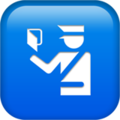
The 🛂 Passport Control emoji may be rarely used, but it is also a sign many people see every day. A passport is a government-issued document with your name, nationality, birthday, and address. Your passport is your identity outside of your home country, and as such, it is extremely important that it must not be a falsified document. Many people have faked their passports in order to illegally immigrate to many countries and escape their former lives. Convicts have also been known to escape their countries by migrating to another country before any official warrants can be made.
As a result, passport control departments are placed on international borders. Places like airports, roads, seaports, and train stations with borders usually have a row of people or machines analyzing your passport and taking your picture. This is to ensure all your documents are legitimate and that the countries you came from aren’t currently looking for your arrest. At every international border, there is always passport control used to fact-check all the necessary documents carried by every traveler.
With such a serious symbol being designed as an emoji, it’s natural that many people wouldn’t use it for no real reason. As a result, most people use the passport control emoji to describe the location they are in. It is usually combined with 🛃 Customs emoji, 🛅 Left Luggage emoji, 📵 No Mobile Phones emoji, and ✈️ Airplane emoji.
Card Index Emoji
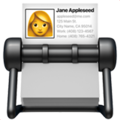
The next on our list of rare emojis is the 📇 Card Index emoji. This emoji features special cards compiled together with pieces of contact information in alphabetical order. The card index might not be familiar to younger Internet users since it became obsolete after the advancement of mobile phones. However, it still remains an important part of the 1950s to 1980s. The card index emoji is designed to have two gray or black stands holding the index cards in place.
Zephyr American’s chief engineer, Hildaur Nielsen, invented and patented the card index in 1956. They called it the Rolodex, which eventually became the company’s new name. Rolodexes were mostly used in corporate offices for organized communications. Sales of the Rolodex boomed in the 1980s but dwindled down as technology advanced further. The card index emoji is exactly what the Rolodex used to be. Unfortunately, not a lot of people remember growing up with one or have ever even heard of one today. As a result, younger generations mistake the index card emoji for word pressing or documents in a folder.
It is quite alright if you wish to use the card index emoji some other way other than a Rolodex. Some people use the card index emoji to describe identification cards in school or to imply gathering information about something or someone. You can still describe an actual Rolodex or mention Rolodex inc with the card index emoji. You can also use it to describe vintage appliances with the 💿 CD emoji, 📟 Pager emoji, and 📼 Video Cassette emoji.
Coral Emoji
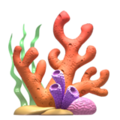
The 🪸 Coral emoji is one of the rare emojis of 2021, and it remains rarely seen on social media as it is newly added. It depicts the corals found in the reefs of the ocean. Corals themselves are marine invertebrates that are necessary to create habitats for marine wildlife. They also protect humans from storms coming in from the ocean, becoming a buffer to prevent flooding into the mainland.
While corals come in many different colors and shapes, the coral emoji was chosen to have reddish-orange skin and white specks covering it. The white specks could resemble coral bleaching, which is caused by climate change. When coral is exposed to too much heat, they expel its algae, causing them to turn white. While the coral is not dead, its mortality rate increases and so does its stress.
Many people have associated coral as a symbol of habitat loss, climate change, and other environmentalist movements. This is why it’s perfectly fine to use the coral emoji to describe protests against coral bleaching or the habitat loss of marine wildlife.
You can also use the coral emoji to describe activities in the coastal areas. Combining the coral emoji, the 🐠 Tropical Fish emoji, and the 🤿 Diving Mask emoji implies that you are snorkeling in the ocean. Meanwhile, the ☀️ Sun emoji, 🏖 Beach emoji, 🐚 Spiral Shell emoji, and 🪣 Bucket emoji describe picking seashells by the sea.
Non-Potable Water Emoji

The 🚱 Non-Potable Water emoji is a symbol that a few people might not understand. The non-potable water emoji features a faucet underneath a prohibited symbol. This emoji is rare for two possible reasons: One, it’s not a common symbol seen in most countries. Two, a situation describing non-potable water is equally as rare.
The non-potable water symbol is internationally known. However, there are many reasons why people may not be aware of this symbol. Normally, you may find this symbol present in campsites, the wild, and some hotels. Residents in countries like Austria, Greenland, and Canada, might be used to drinking water from the faucet directly. As a result, this symbol exists as a reminder that water from the restroom or kitchen isn’t safe for direct consumption.
While uses for the non-potable water emoji are few, they still exist. A person who comes across a lake or river might place a non-potable water emoji on their Instagram or Facebook post to warn people that the water in the area is not safe for drinking. It could also describe certain situations in locations or your own personal predicament. If you are thirsty but have no drinking water readily available, you can use the non-potable water emoji, and readers will understand immediately.
Input Symbols Emoji
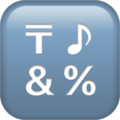
The 🔣 Input Symbols emoji belongs to a group of keyboard emoji symbols. This emoji includes the Japanese postal mark symbol, the musical note symbol, the ampersand symbol or the @ symbol, and the percentage symbol, all placed inside of the blue box. The design of the input symbols emoji varies according to the platforms. This is why the input symbols became rare in the first place. Additionally, aside from the musical note and Japanese postal mark symbols, you can easily type in the glyphs included in the emoji instead.
The original purpose of the input symbols emoji was for software keyboards to be able to enable the symbol input from the alphabetical or numerical input. Think of it as your phone’s keyboard when you’re pressing different buttons to open the emoji keyboard or the numerical keyboard. Unfortunately, this information isn’t quite well-known. While it may fulfill its original purpose one day, the input symbols emoji has remained on hold for a few years. When using the input symbols emoji, you might refer to the software keyboard input it was originally prepared for. However, you can also describe glyphs or coding in information systems as well.
Despite its lack of popularity, the input symbols emoji has gained a group of loyal followers. An Internet user on Twitter created Least Used Emoji Bot, loyally reminding Twitter users of the input symbols’ existence. The unknown user’s efforts worked, with 37,000 followers on Twitter repeatedly using the emoji for it to rank higher than it usually does.
Heart On Fire Emoji

Just like the pregnant man emoji, we also have another one on the list that is rare but a part of the new emojis. 2020 was a rough time for many people, especially since it was the beginning of the pandemic. Because of the many occurrences during that year, it was difficult to notice the heart on fire emoji. However, the rare emoji still has a chance to rise in popularity.
The ❤️🔥 Heart on Fire emoji is part of the set of heart emojis. The burning flame represents three possible things. One possible symbolism of the heart on fire emoji is passionate love or extreme lust for a person. If you send this to someone, it implies that you have a burning passion to be with them. At the same time, it also describes wanting the person sexually.
The second possible symbolism of the heart on fire emoji is letting things burn. Moving on from a broken relationship or letting a relationship die out can also symbolize a flame turning your love into ashes.
The final possible representation of the heart on fire emoji is the Sacred Heart of Jesus. This is because the actual Sacred Heart of Jesus symbol is a heart on fire surrounded by thorns and a knife. Devoted Roman Catholics use the Sacred Heart of Jesus as a reminder of his passion and death on the cross.
Woman With Beard Emoji
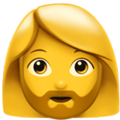
Another rare emoji is the 🧔♀️ Woman with Beard emoji. This emoji features the 👩 Woman emoji, with a beard. While the symptoms of females having beards is more normal than previously thought, not many people, in general, have heard about the emoji at all. It is the female variation of the 🧔 Man with Beard emoji.
Hirsutism is a condition that causes women to produce hair on their face, chest, and back. Hirsutism is also a common symptom of polycystic ovarian syndrome (also known as PCOS). Furthermore, PCOS is steadily becoming more and more normal within the general female population. This means that women with beards aren’t that uncommon. A possible reason why the bearded woman emoji isn’t as popular as other emojis is because of the year it was introduced. Like the heart on fire emoji, the bearded woman emoji was released in 2020. During that time, people had more serious concerns to pay attention to.
You can use the woman with beard emoji to describe being diagnosed with polycystic ovarian syndrome. Meanwhile, it can also be used with the 🎠 Carousel Horse emoji, 🎡 Ferris Wheel emoji, and 🤡 Clown emoji to describe traditional carnivals. Another possible use of the bearded woman emoji is to represent transfeminine people. Just like the pregnant man emoji, there are some women who also grow beards. This emoji is also a possible representation of their gender.
Japanese Free Of Charge Emoji
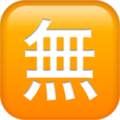
The 🈚 Japanese Free of Charge emoji might be one of the weirdest emojis you have ever encountered. However, it is also possible to be quite aware of what the emoji means and may even use it from time to time. The only difference between those who do know the purpose of the Japanese free-of-charge emoji and those who don’t is understanding their language.
The characters in the middle of the orange square in this emoji mean nothing for something. It means that you do not need to pay, exchange another item, or do anything to receive something else. In today’s world, the concept of “free of charge” is a relatively rare one. However, the idea is possible in the form of charity and sponsored events.
Regardless, it is still possible to still use the Japanese free-of-charge emoji the way it should be used (to indicate free services and goods). However, a few Internet users have also been using the this emoji for a different purpose. Some people use the emoji itself to refer to the person they are speaking to as nothing. By sending this emoji, you could be insulting someone in three possible ways: the first one is to claim they give themselves away for free. The second is they live off their parent’s money. And the third is to claim their existence does not matter.
Japanese Acceptable Emoji
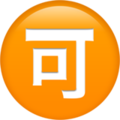
The 🉑 Japanese Acceptable emoji features a Japanese kanji with an orange background. Just like the Japanese free-of-charge emoji, the Japanese acceptable emoji is rarely used due to language barriers. However, their difference comes from the Japanese acceptable emoji having a relatable purpose. While not many people know it means “accepted”, it still has a chance to rise in the ranks as long as the Japanese language remains alive.
There are many ways to use the Japanese acceptable emoji. The first one is during business meetings or corporate submissions. Some higher-ups may send the Japanese acceptable emoji next to the 👌 OK Hand emoji or the ✔️ Check Mark emoji to approve your proposal or request. Students can also use the Japanese acceptable emoji to describe passing their exams or school year.
Another way of using the Japanese acceptable emoji is to set it next to the 🤷 Person Shrugging emoji. This describes a person nonchalantly giving the other a pass or approval over something. It can be used to describe an agreement made out on a whim. However, this could also imply being apathetic about a person’s troubles or statements about you.
The third reason is that the Japanese acceptable emoji is used to symbolize true acceptance. Both the bad things and the good things in life are embraced and made peace with whenever a person learns to truly accept things. As a result, the Japanese acceptable emoji can also declare being at peace with everything and themselves.
Aerial Tramway Emoji

Aerial tramways are usually seen at ski resorts where snow fills the entire area. Also known as cable cars, ropeways, or sky trams, these trams lift people from one location to another by using three ropes. The emoji version of the aerial tramway features ropes above the aerial tramway.
Despite its rarity, the 🚡 Aerial Tramway emoji also has loyal fans on Twitter. In 2018, the aerial tramway emoji skyrocketed after being declared the least popular emoji being used on Twitter. The goal was to ensure the aerial tramway became more popular in order to rise in rank. In the end, Twitter users succeeded.
Nowadays, the aerial tramway emoji has an equivalent meaning as a ski resort. You can place it next to the 🏔️ Snow-Capped Mountain emoji, ❄️ Snowflake emoji, and 🏂 Snowboarder emoji to describe skiing down the alps. Meanwhile, you can also imply that you’re on your way to go sightseeing by using the aerial tramways.
Twelve-Thirty Emoji
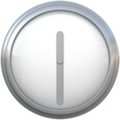
Last on our rare emojis list is the 🕧 Twelve-Thirty emoji. Also known as the clock face 12:30 emoji, the twelve-thirty emoji belongs to a set of clock emojis that tell different times within the day. People use clock emojis to tell the time quicker by showing it in the form of emojis. The downside of using clock emojis is that they do not specify whether it is morning or evening.
The strange thing about the twelve-thirty emoji is that it’s the lowest ranking of all the clock emojis. All the clock emojis have the same style: a light-colored clock face with an hour hand and a minute hand showing time. Some people believe it is rare to find anyone using the twelve-thirty emoji because you can easily say “lunchtime” instead. Meanwhile, others believe that the twelve-thirty emoji is not as attractive as its other clock faces.
You can use the 12:30 emoji by placing the 🌞 Sun with Face emoji or the 🌚 New Moon Face emoji to describe the specific time you plan to meet or do an activity. Meanwhile, you can also use all the members of the clock emojis set to describe time going by slowly. Another way of using the 12:30 emoji is to place it next to the ⏰ Alarm Clock emoji and the 🛌 Person in Bed emoji. This combination communicates to the receiver that you wish to wake up at 12:30 from your slumber.
Conclusion
We hope you enjoyed learning about the rare emojis listed above. Especially since all the developers made these emojis with a purpose. All emojis (including free emojis or those bought within applications) have a reason they were created. Nevertheless, everyone is allowed to have their own take on the emojis listed above. Whether someone uses keyboard emojis, uses various keyboard symbols to create emojis, or gets emojis via the copy-and-paste action on the Internet.
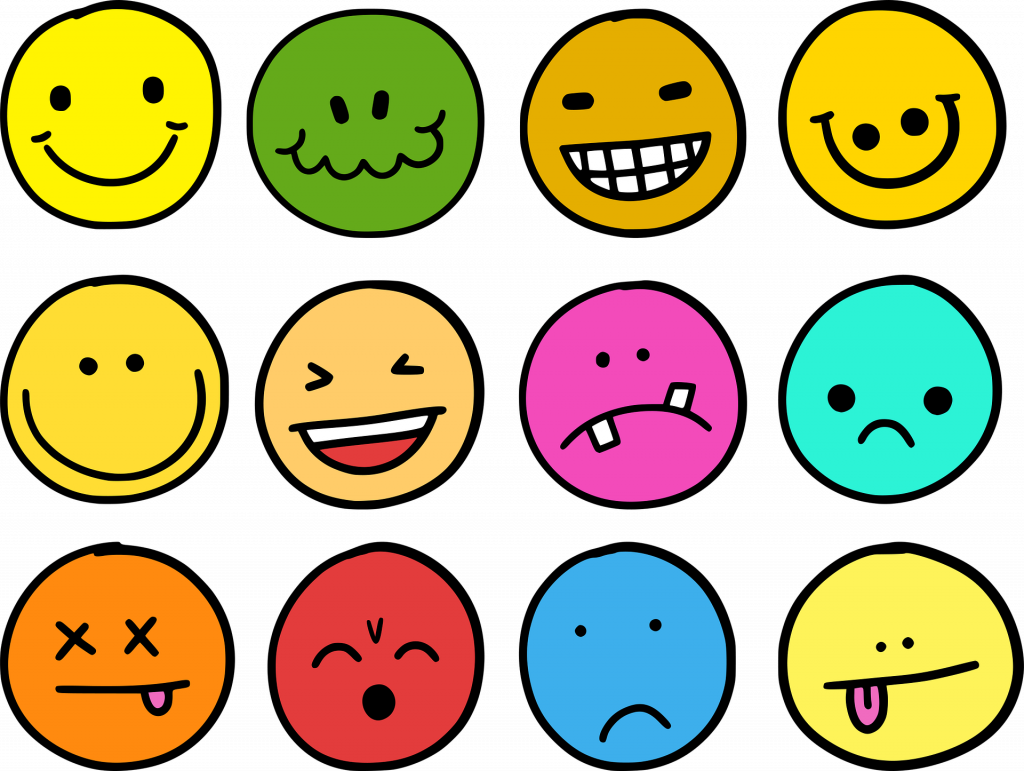
Image from Pixabay
It is also interesting to learn more about how people understand the use of rare emojis. Many of these emojis become rare because of language barriers, such as the Japanese language on the emoji. This gives us an opportunity to learn more about the various social norms they have that we don’t. Likewise, those who have never experienced riding on an aerial tramway may look it up and gain information about this exciting mode of transportation.
The twelve emojis we presented are just a fraction of the rare emojis you can find on your own. With more than three thousand emojis available for you on the Internet, it is easy to overlook the ones that you don’t see every day. However, that doesn’t mean you can’t explore and find one you like.
Remember that the emoji list grows every year. More and more people will begin creating their own emojis that can become a universal language for many things such as the 🍆 Eggplant emoji or the 🌿 Herb emoji.

